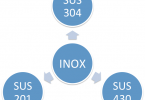As the advertising landscape evolves, TV media buying has adapted to accommodate changes in technology, viewer behavior, and campaign strategies. From traditional broadcast TV to modern connected TV (CTV) platforms, understanding the ins and outs of TV media buying is crucial for businesses looking to reach diverse audiences. This guide covers everything advertisers need to know about TV media buying, offering insights into different formats, key strategies, and essential tips for optimizing your campaigns in today’s fragmented media environment.
Contents
What is TV Media Buying?
TV media buying refers to the process of purchasing advertising slots on television platforms, including traditional broadcast networks, cable channels, and digital TV options like connected TV (CTV) and over-the-top (OTT) services. The goal of TV media buying is to place ads in front of targeted audiences during shows, channels, or networks that align with a brand’s target demographic.
With modern advancements, advertisers have more options than ever before, from national broadcasts to more localized and highly specific digital TV ads. However, buying TV media effectively requires careful planning and understanding of each medium’s unique characteristics.
Types of TV Media Buying
TV media buying isn’t a one-size-fits-all approach. It spans several types of platforms, each with unique advantages for advertisers.
1. Broadcast TV Buying
Broadcast TV is the traditional format where advertisers buy commercial time on major networks (e.g., ABC, NBC, CBS, Fox). These channels often attract a broad, national audience, making them ideal for brands seeking mass exposure. However, buying ads on broadcast TV can be costly due to high viewership, especially during prime time and special events like the Super Bowl or award shows.
2. Cable TV Buying
Cable TV involves buying ad slots on specific channels available through cable providers (e.g., ESPN, HGTV, CNN). While cable TV can still reach large audiences, it’s more segmented than broadcast TV, allowing advertisers to target specific viewer interests or demographics more precisely.
3. Connected TV (CTV) Buying
Connected TV, or CTV advertising, refers to ads placed on streaming platforms that users access via smart TVs or streaming devices like Roku, Apple TV, and Amazon Fire Stick. CTV ads reach cord-cutters who have shifted away from traditional TV and offer advertisers the benefit of highly targeted advertising.
4. Over-the-Top (OTT) Buying
OTT refers to video content delivered directly to viewers via the internet, bypassing traditional cable or satellite providers. This includes services like Netflix, Hulu, and Disney+. OTT advertising allows advertisers to insert commercials within streaming content and offers advanced targeting based on user data.
5. Programmatic TV Buying
Programmatic TV buying automates the purchasing process through software platforms that allow advertisers to bid on TV ad inventory in real-time. This method is becoming increasingly popular for programmatic advertising across both digital and traditional TV platforms. It enables precise targeting and better measurement of campaign performance.
The TV Media Buying Process
The TV media buying process can be broken down into several steps that advertisers must follow to ensure their campaigns are effective and reach the intended audience.
1. Define Your Target Audience
Before purchasing any TV ad space, it’s essential to define your target audience. This can be based on demographics (age, gender, income), psychographics (interests, lifestyles), or even geographic locations. Knowing your target will help determine the right channels, times, and platforms for your ad to be seen by the right people.
2. Determine Your Goals
Different TV formats serve different purposes. For example, demand generation campaigns may require broad reach through national TV spots, while a performance marketing approach may focus on specific, high-intent audiences through CTV or OTT channels. Understanding your campaign’s goals will inform your media buying decisions.
3. Set Your Budget
TV media buying can be expensive, especially for national campaigns or popular time slots. Budgeting is key to ensuring that you don’t overspend. Consider factors like ad length, frequency, and the channels or platforms where your ads will appear. Keep in mind that digital TV formats like CTV and OTT often provide more flexibility in terms of budget and targeting options.
4. Choose the Right TV Platform
Based on your audience and goals, select the most appropriate platform. If you’re looking for mass reach, broadcast or cable TV might be the best option. However, if you’re targeting a specific demographic, especially younger or tech-savvy audiences, connected TV or OTT platforms offer better targeting capabilities and user engagement metrics.
5. Negotiate and Purchase Ad Space
Once you’ve selected your platforms and budget, you can begin negotiating rates with media sellers. For traditional TV, this often involves contacting network representatives. For digital TV, much of the buying process can be handled programmatically through automated platforms, allowing for real-time bidding and adjustments.
6. Monitor and Optimize Performance
Monitoring your TV campaigns in real-time can help you make necessary adjustments to maximize effectiveness. On CTV and OTT platforms, advertisers have access to more advanced data analytics, enabling them to measure KPIs like view-through rates, engagement, and even direct conversions. Optimizing based on these insights will ensure you get the most out of your TV ad spend.
Key Considerations in TV Media Buying
1. Audience Targeting
TV media buying has evolved from a broad targeting approach to a much more data-driven one. With connected TV and OTT, advertisers can target specific audience segments based on demographics, interests, viewing behaviors, and even past purchasing behaviors. This level of precision helps advertisers reduce wasted impressions and ensure that ads are seen by those most likely to engage with the brand.
2. Dayparting
Dayparting refers to the practice of scheduling ads to run during specific times of the day, such as morning, afternoon, or prime time. Different audiences tune in at different times, so selecting the right time slot for your ad can impact its success. For example, prime time (7 PM – 11 PM) typically attracts the highest viewership, while morning and late-night slots may be more affordable and effective for certain niche audiences.
3. Frequency
Frequency is the number of times your ad is shown to a particular viewer. Finding the right balance is crucial—too few exposures and the viewer may forget your message, while too many exposures can lead to ad fatigue. Connected TV platforms often allow for more control over ad frequency, helping advertisers maintain the right level of engagement.
4. Creative Considerations
Your ad’s creative design can have a significant impact on how it’s received by viewers. Whether it’s a 15-second pre-roll ad on OTT or a 30-second spot on broadcast TV, your creative should be tailored to the platform and audience. For instance, shorter, more engaging ads tend to perform better on OTT and CTV platforms where viewers can easily skip or fast-forward through content.
5. Measurement and Attribution
In the digital age, advertisers expect more from their media buys, including detailed performance data. With CTV and OTT, it’s possible to track viewer engagement, ad completion rates, and even actions taken after viewing the ad (like visiting a website). Traditional TV, on the other hand, offers fewer performance metrics, often relying on gross rating points (GRPs) to measure audience reach.
6. Cross-Platform Integration
Many advertisers are combining traditional TV with digital formats to create a cohesive, cross-platform advertising strategy. For instance, running a national TV campaign alongside targeted CTV ads allows brands to reach broad audiences while also delivering personalized content to more niche groups. This integrated approach ensures that you’re reaching customers at multiple touchpoints.
The Benefits of Connected TV (CTV) and OTT Advertising
With more consumers cutting the cord and turning to streaming services, CTV and OTT advertising have become essential parts of the TV media buying ecosystem. These platforms offer several advantages over traditional TV:
- Advanced Targeting: CTV and OTT platforms allow for precise audience targeting based on behavior, demographics, and even geographic location.
- Data-Driven Insights: Advertisers can leverage real-time data to optimize their campaigns, track engagement, and measure conversions.
- Cost Efficiency: Compared to traditional TV, CTV and OTT often provide more flexibility in terms of budget and ad frequency, allowing advertisers to reach niche audiences without overspending.
- High Engagement: Many streaming viewers are highly engaged with the content they consume, making them more likely to pay attention to ads, especially if they’re relevant.
Conclusion
In today’s complex advertising landscape, TV media buying has evolved to offer more options and better targeting capabilities than ever before. Whether you’re opting for traditional broadcast TV or venturing into the world of connected TV and OTT, understanding the fundamentals of TV media buying is essential for optimizing your campaigns. By strategically selecting the right platforms, carefully targeting your audience, and leveraging data for real-time insights, advertisers can create impactful campaigns that reach their desired audience effectively.





